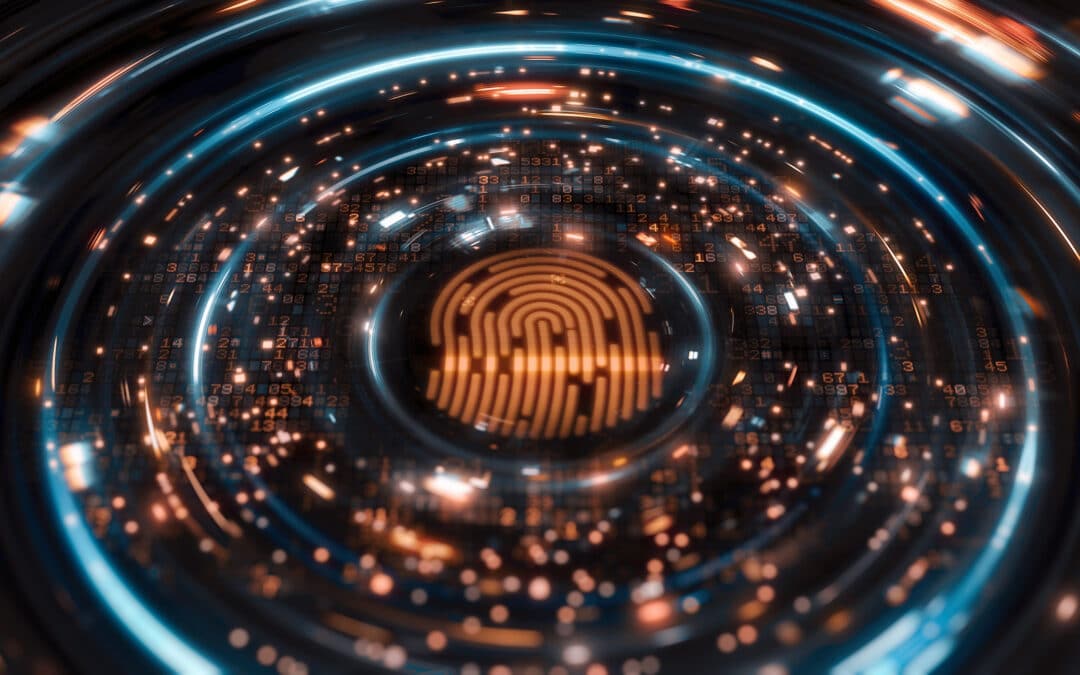Key Takeaways:
- Proactive Over Reactive: Shifting from a reactive to a proactive approach is essential in managing insider risks. Continuous monitoring and analysis of human behavior are key to detecting potential insider risks before they escalate.
- The Power of AI: AI-powered Insider Risk Management (IRM) solutions offer advanced behavioral insights that traditional methods can’t match. By analyzing vast amounts of data in real-time, AI helps identify subtle anomalies and predict insider risks, enabling organizations to take preventive action.
- Human-Centric Security: Focusing on the human element in cybersecurity is crucial. Understanding and managing behaviors at the individual level reduces friction in security measures and enhances overall security posture.
- Integration is Key: IRM should be seamlessly integrated with other security tools like SIEM and DLP to create a comprehensive, proactive threat management strategy that improves both security and employee experience.
- Evolving Workforce, Evolving Risks: The rise of remote work and digital interactions has heightened the complexity of insider threats. Insider Risk Management (IRM) is a key component in shifting the focus to human behavior, enabling organizations to stay ahead of potential risks with a data-driven approach.
The Promise of the Human Firewall is Achievable Today
Recognizing the indicators of insider risk before they escalate requires a paradigm shift, focusing on proactive human behavior management rather than relying solely on reactive measures. This shift emphasizes the need for continuous training and awareness programs that equip employees to recognize risky behaviors and mitigate threats early. By empowering teams with the knowledge to spot patterns and anomalies, organizations can better gauge the level of risk posed by specific behaviors.
The ultimate goal is to prevent insider risk, ensure compliance, and maintain seamless operations without being overly intrusive. As remote work, cloud complexity, and digital interactions rise, the potential for insider threats grows—whether from unintentional human errors or malicious actions. With targeted training programs and AI-powered Insider Risk Management (IRM), organizations can more effectively focus on individuals who pose the greatest risk—before issues arise.
Understanding the Modern Insider Threat Landscape
The Shift to Human-Centric Security
Cybersecurity is saturated with various insider threat detection and mitigation solutions, yet many organizations still struggle to protect themselves adequately. The modern workforce is more dispersed and digitally connected than ever, increasing the potential for insider risk. Gartner states insider threats accounted for 82% of data breaches last year. The focus needs to shift from solely mitigating threats to understanding and managing the risks posed by human behavior. This approach, known as Human-Centric Security, emphasizes reducing the friction caused by security measures and managing overall security risks associated with certain behaviors at the individual level.
Key Challenges in Cybersecurity Today
- Gaps in Internal Cybersecurity Maturity While many companies have developed robust strategies to address external threats, a key area that often falls short is managing insider risks. As businesses continue to evolve and digital interactions continue to grow, ensuring a comprehensive approach that includes both external and internal threats is essential to fortifying the security posture.
- Complexity and Non-Interoperability of Security Solutions Even for companies that invest in cybersecurity solutions, the solution stack is often fragmented with various tools that do not communicate with each other. Organizations might have multiple security solutions in place, such as IAM (Identity and Access Management), DLP (Data Loss Prevention), SIEM (Security Information and Event Management), and more, each addressing specific threats but lacking integration.
- Focus on Threats Rather Than Risks Cybersecurity approaches, like SIEM (Security Information and Event Management) and DLP (Data Loss Prevention), are designed to react to threats that have already occurred or are in process. These solutions are essential, but they focus on mitigating threats rather than identifying and managing risks that precede these threats.
Fostering a Human-Centric Defense with AI-Powered IRM
To address these challenges, organizations must adopt AI-powered IRM solutions that provide deeper insights into human behavior and help predict and prevent insider threats. AI-powered IRM allows for continuous monitoring and analysis of work patterns, helping to detect deviations that could indicate potential risks. It tracks employee locations and flags unexpected changes that might signal a security threat. By analyzing vast amounts of data, AI-powered IRM can identify unusual access patterns that signal unauthorized activity or potential insider threats. It monitors communication channels for irregular patterns and interactions, providing insights into with whom employees interact regularly. AI-powered IRM dynamically updates individual risk profiles based on behavioral patterns, sentiment analysis, and detection of sensitive data exposure.
Proactive Risk Management: A New Paradigm
Behavioral Analysis and Early Detection By integrating AI and behavioral analysis, organizations can move from reactive to proactive security measures. AI-powered IRM tools can detect subtle changes in behavior, communication patterns, and access anomalies, providing early warning signs of potential insider threats. This approach allows organizations to address issues before they escalate into full-blown security incidents. Comprehensive and Seamless Security Integration AI-powered IRM is a critical layer that complements security solutions like SIEM and DLP. It provides the necessary context and real-time insights to enhance the effectiveness of these tools. For example, if an insider risk management system detects an anomaly, it can trigger a SIEM solution to take immediate action, preventing potential breaches. Improving Employee Experience Human-centric security focuses on reducing risks and aiming to improve the overall employee experience. Organizations can create a safer, more supportive work environment by understanding and managing behaviors that lead to threats. This approach helps identify employees who may need additional support or training, further mitigating risks and enhancing productivity.
Final Thoughts
Expanding the human firewall with AI-powered IRM transforms how organizations approach security, moving from reactive responses to proactive prevention. By focusing on understanding human behavior and predicting potential threats, businesses can create a security-first culture where the workforce is a powerful line of defense. AI-powered IRM tools provide the insights needed to recognize and address the indicators of insider risk, ensuring organizations can get ahead of the evolving challenges of today’s digital landscape. Protect your organization from the inside out. Discover how Veriato’s Insider Risk Management human-centric approach to cybersecurity can help you better manage insider threats and strengthen your security strategy. Contact us to learn more.
FAQs
- What is a Human Firewall? A human firewall refers to the proactive steps an organization takes to strengthen its security by focusing on training employees in best practices to recognize and avoid potential threats. It includes ongoing education, awareness programs, and protocols that help employees understand their role in preventing security breaches. By equipping staff with the tools and knowledge to spot risks, the human firewall becomes the first line of defense against insider threats. Insider Risk Management (IRM) reinforces and supports these initiatives by providing real-time monitoring and insights into behavior, helping to identify risks that training alone might not catch, and ensuring a more comprehensive approach to organizational security.
- Why is Insider Risk Management (IRM) important in building a Human Firewall? Insider Risk Management is crucial because it helps organizations identify, monitor, and mitigate risks that originate from within. By using IRM, companies can proactively address potential threats from employees, contractors, or partners who may unintentionally or maliciously cause harm. IRM enhances the human firewall by continuously analyzing behavior and detecting anomalies that could signal insider threats.
- How does AI enhance Insider Risk Management? AI enhances IRM by providing advanced analytics and behavior modeling that are beyond human capabilities. It can analyze vast amounts of data in real-time, identify patterns, and detect subtle anomalies that might indicate a potential insider threat. AI-powered IRM solutions can predict risks before they materialize, allowing organizations to take proactive measures to prevent security incidents.
- What are the common types of insider threats? Insider threats can be categorized into three main types: – Careless Users: Employees who unintentionally compromise security due to negligence or lack of awareness. – Malicious Users: Insiders who intentionally harm the organization for personal gain, revenge, or other motives. – Compromised Users: Individuals whose credentials have been stolen or who have been coerced into aiding external attackers.
- How does IRM contribute to a proactive security strategy? IRM contributes to a proactive security strategy by continuously monitoring user activities, analyzing behavior, and identifying potential threats before they escalate. Instead of reacting to incidents after they occur, IRM allows organizations to address insider risks in real-time, reducing the likelihood of data breaches and other security incidents.
- What role does behavior analysis play in IRM? Behavior analysis is a core component of IRM. It involves monitoring and analyzing user activities to establish a baseline of normal behavior. Deviations from this baseline can indicate potential insider threats. By continuously assessing behavior, IRM solutions can detect and respond to unusual activities that could compromise security.
- How can IRM improve compliance and productivity? IRM improves compliance by ensuring that employees adhere to regulatory requirements and company policies. It provides detailed insights into user activities, helping organizations identify and address non-compliance issues. Additionally, by monitoring productivity-related behaviors, IRM can help optimize workforce efficiency, ensuring that employees remain focused on their tasks while maintaining security.
- How does IRM integrate with other security solutions? IRM integrates seamlessly with other security solutions such as Data Loss Prevention (DLP) and Security Information and Event Management (SIEM). By combining these tools, organizations can create a comprehensive security strategy that not only detects and responds to threats but also provides contextual insights to better understand and manage risks.
- Why should businesses prioritize Insider Risk Management now? With the rise of remote work and the increasing complexity of digital environments, insider risks have become more prevalent and harder to manage. Businesses that prioritize IRM are better equipped to protect their assets, maintain compliance, and ensure a secure and productive workplace. In today’s dynamic landscape, being proactive about insider risk is not just a best practice—it’s essential for long-term success.

Insider Risk – How Prepared Are You?
Not every company is equally prepared to deal with insider risk. This report outlines the four stages of insider risk maturity and explores how to improve your insider risk preparedness.




